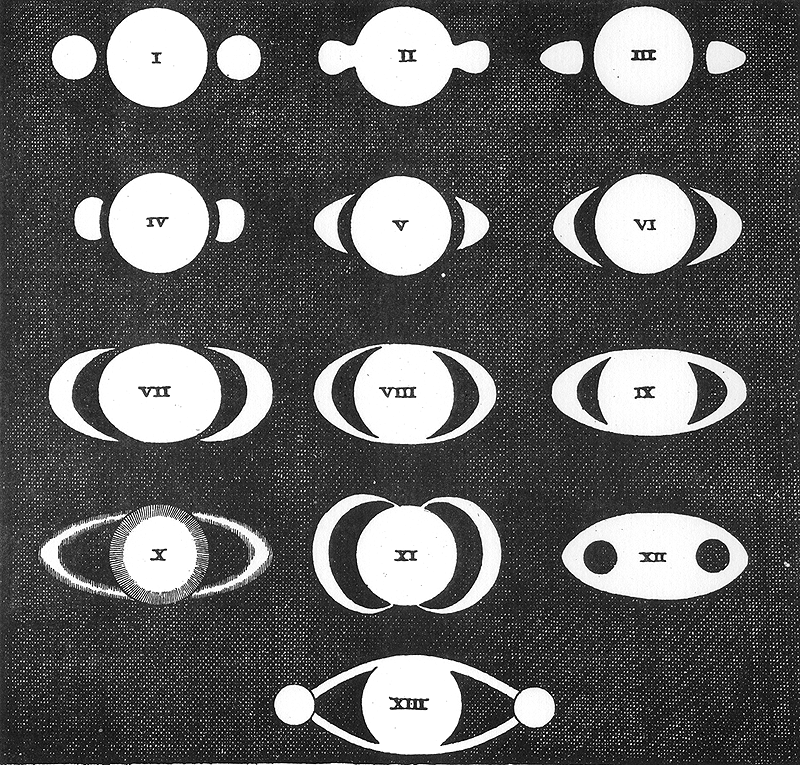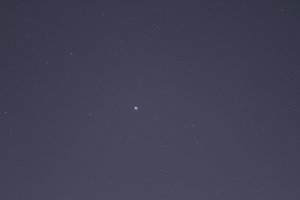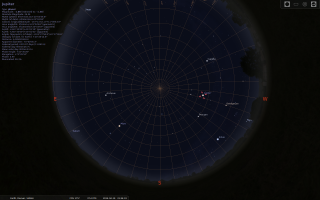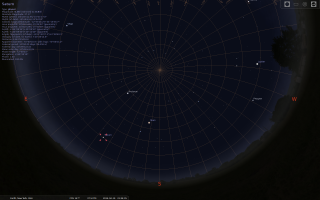Hello, I was recently taking some images of the night sky when I noticed a really bright star (not sure about that) It was the brightest thing in the sky (except for the passing airplanes) and in the image, I found 2 thin/small streaks on each side of that bright object, could anyone help in identifying what it is? :-\
You are using an out of date browser. It may not display this or other websites correctly.
You should upgrade or use an alternative browser.
You should upgrade or use an alternative browser.
What's this? (SOLVED)
- Thread starter traingineer
- Start date
Re: What's this?
I don't really think it's the ISS. But thank you!
Jim Saunders said:ISS? Best guess I can give you.
Jim
I don't really think it's the ISS. But thank you!
Upvote
0
Re: What's this?
Most likely, it's Jupiter. Here's a shot I took with Jupiter being the brightest object in the sky:
 Moonlit Bridge by yorgasor, on Flickr
Moonlit Bridge by yorgasor, on Flickr
I wasn't sure what it was, but I mentioned it to my dad, he went to an astronomy site, plugged in the day and time and location, and Jupiter was indeed in that rough area according to the chart produced.
Most likely, it's Jupiter. Here's a shot I took with Jupiter being the brightest object in the sky:
 Moonlit Bridge by yorgasor, on Flickr
Moonlit Bridge by yorgasor, on FlickrI wasn't sure what it was, but I mentioned it to my dad, he went to an astronomy site, plugged in the day and time and location, and Jupiter was indeed in that rough area according to the chart produced.
Upvote
0
Re: What's this?
Kewl.
yorgasor said:Most likely, it's Jupiter. Here's a shot I took with Jupiter being the brightest object in the sky:
Moonlit Bridge by yorgasor, on Flickr
I wasn't sure what it was, but I mentioned it to my dad, he went to an astronomy site, plugged in the day and time and location, and Jupiter was indeed in that rough area according to the chart produced.
Kewl.
Upvote
0
Re: What's this?
Abbreviated rules for identifying stuff in the sky:
Abbreviated rules for identifying stuff in the sky:
- If it twinkles, it is a star.
- Otherwise, if it isn't obviously moving, it is a planet:
- The red one is Mars.
- The big one is Jupiter.
- The yellow one is Saturn.
- The really, really dim, bluish one is Uranus.
- The one that's very close to the horizon at sunset or sunrise is almost always Mercury.
- The other one is Venus.
- If it is extremely bright and moving, with no blinking lights, it is the ISS.
- If it has blinking lights, it is an aircraft.
Upvote
0
Re: What's this?
I know very little about this kind of thing, but is it really possible to see those distant planets like Saturn, Uranus, Neptune (visually or with a wide angle/normal lens)? I live in a light-polluted area, but have been to some amazing dark sky areas over the years and I'm curious to know what you can see without a telescope.dgatwood said:Abbreviated rules for identifying stuff in the sky:
- If it twinkles, it is a star.
- Otherwise, if it isn't obviously moving, it is a planet:
- The red one is Mars.
- The big one is Jupiter.
- The yellow one is Saturn.
- The really, really dim, bluish one is Uranus.
- The one that's very close to the horizon at sunset or sunrise is almost always Mercury.
- The other one is Venus.
- If it is extremely bright and moving, with no blinking lights, it is the ISS.
- If it has blinking lights, it is an aircraft.
Upvote
0
Re: What's this?
It's hard to tell without any obvious points of reference. I use Stellarium to identify objects in the sky. You can run it back to the date/time of your photo in your location to see the night sky. It helps if you remember the general direction your lens was pointed. It also helps to to where it was positioned in the sky, such as relative to any constellations since Stellarium can also display those for you.
Given the 6 second exposure I doubt it was the ISS, satellite or plane. I believe they would have enough movement to notice in the image.
I used 4/19 at 9:24PM from your photo with Denver as the location to produce this screen capture - not sure about your DST setting. For planets, Mars was in the southeast sky, Saturn was not yet visible to the southeast, and Jupiter was in the west. The brightest stars are also labelled for you.
traingineer said:Hello, I was recently taking some images of the night sky when I noticed a really bright star (not sure about that) It was the brightest thing in the sky (except for the passing airplanes) and in the image, I found 2 thin/small streaks on each side of that bright object, could anyone help in identifying what it is? :-\
It's hard to tell without any obvious points of reference. I use Stellarium to identify objects in the sky. You can run it back to the date/time of your photo in your location to see the night sky. It helps if you remember the general direction your lens was pointed. It also helps to to where it was positioned in the sky, such as relative to any constellations since Stellarium can also display those for you.
Given the 6 second exposure I doubt it was the ISS, satellite or plane. I believe they would have enough movement to notice in the image.
I used 4/19 at 9:24PM from your photo with Denver as the location to produce this screen capture - not sure about your DST setting. For planets, Mars was in the southeast sky, Saturn was not yet visible to the southeast, and Jupiter was in the west. The brightest stars are also labelled for you.
Attachments
Upvote
0
Re: What's this?
Now that is a GORGEOUS photo! Well done!!!
Another vote for Stellarium (http://www.stellarium.org/) is a freeware astronomy program that is great for identifying what is happening in the night sky. As well as real-time, it can also be used to check the sky in the past or the future for interesting events. Freeware, available for window, mac, linux. There is also a version available for android available for a minimal cost. Not sure if there's one for ios.
yorgasor said:Most likely, it's Jupiter. Here's a shot I took with Jupiter being the brightest object in the sky:
Moonlit Bridge by yorgasor, on Flickr
I wasn't sure what it was, but I mentioned it to my dad, he went to an astronomy site, plugged in the day and time and location, and Jupiter was indeed in that rough area according to the chart produced.
Now that is a GORGEOUS photo! Well done!!!
Another vote for Stellarium (http://www.stellarium.org/) is a freeware astronomy program that is great for identifying what is happening in the night sky. As well as real-time, it can also be used to check the sky in the past or the future for interesting events. Freeware, available for window, mac, linux. There is also a version available for android available for a minimal cost. Not sure if there's one for ios.
Upvote
0
Re: What's this?
I use the IOS version on my iPhone at night in the field. It even has a night view mode that switches to red for viewing in the dark without destroying your night vision. Its a nice real time view to verify the sky.
lintoni said:yorgasor said:Most likely, it's Jupiter. Here's a shot I took with Jupiter being the brightest object in the sky:
Moonlit Bridge by yorgasor, on Flickr
I wasn't sure what it was, but I mentioned it to my dad, he went to an astronomy site, plugged in the day and time and location, and Jupiter was indeed in that rough area according to the chart produced.
Now that is a GORGEOUS photo! Well done!!!
Another vote for Stellarium (http://www.stellarium.org/) is a freeware astronomy program that is great for identifying what is happening in the night sky. As well as real-time, it can also be used to check the sky in the past or the future for interesting events. Freeware, available for window, mac, linux. There is also a version available for android available for a minimal cost. Not sure if there's one for ios.
I use the IOS version on my iPhone at night in the field. It even has a night view mode that switches to red for viewing in the dark without destroying your night vision. Its a nice real time view to verify the sky.
Upvote
0
Re: What's this?
It does look like Galileo's pictures of Saturn (though these are by Huygens - oop!)
 :
:
traingineer said:Hello, I was recently taking some images of the night sky when I noticed a really bright star (not sure about that) It was the brightest thing in the sky (except for the passing airplanes) and in the image, I found 2 thin/small streaks on each side of that bright object, could anyone help in identifying what it is? :-\
It does look like Galileo's pictures of Saturn (though these are by Huygens - oop!)

Upvote
0
Re: What's this?
Switching locations to the east cost (New York) in Stellarium - Saturn is definitely visible in the southeast.
lintoni said:traingineer said:Hello, I was recently taking some images of the night sky when I noticed a really bright star (not sure about that) It was the brightest thing in the sky (except for the passing airplanes) and in the image, I found 2 thin/small streaks on each side of that bright object, could anyone help in identifying what it is? :-\
It does look like Galileo's pictures of Saturn (though these are by Huygens - oop!)
Switching locations to the east cost (New York) in Stellarium - Saturn is definitely visible in the southeast.
Attachments
Upvote
0
Re: What's this?
Thanks, Stellarium is awesome. And after getting the coordinates/exact time in. It appears that my original image shows Jupiter c:
dcm said:traingineer said:Hello, I was recently taking some images of the night sky when I noticed a really bright star (not sure about that) It was the brightest thing in the sky (except for the passing airplanes) and in the image, I found 2 thin/small streaks on each side of that bright object, could anyone help in identifying what it is? :-\
It's hard to tell without any obvious points of reference. I use Stellarium to identify objects in the sky. You can run it back to the date/time of your photo in your location to see the night sky. It helps if you remember the general direction your lens was pointed. It also helps to to where it was positioned in the sky, such as relative to any constellations since Stellarium can also display those for you.
Given the 6 second exposure I doubt it was the ISS, satellite or plane. I believe they would have enough movement to notice in the image.
I used 4/19 at 9:24PM from your photo with Denver as the location to produce this screen capture - not sure about your DST setting. For planets, Mars was in the southeast sky, Saturn was not yet visible to the southeast, and Jupiter was in the west. The brightest stars are also labelled for you.
Thanks, Stellarium is awesome. And after getting the coordinates/exact time in. It appears that my original image shows Jupiter c:
Upvote
0
Similar threads
- Replies
- 27
- Views
- 3K
- Replies
- 0
- Views
- 1K
- Replies
- 9
- Views
- 5K
- Replies
- 12
- Views
- 5K



